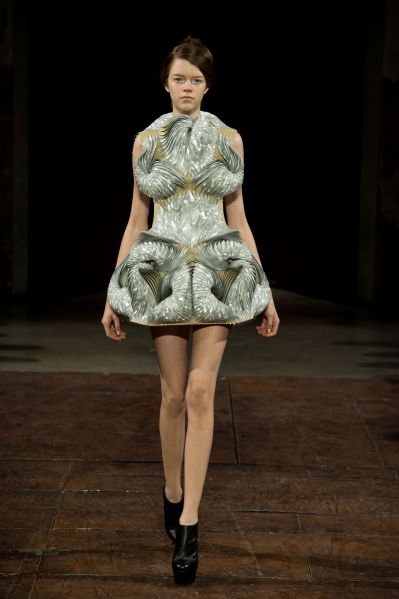How to Build a Season-Ready Look With Sedgars Designer Fashion
Wiki Article
The Influence of Sustainable Practices on Modern Style Styles
Sustainable techniques have improved modern style, driving a shift towards eco-friendly materials and ethical production. Designers currently favor organic cotton, recycled fabrics, and cutting-edge textiles. Upcycling has actually changed waste right into one-of-a-kind garments, while transparency in sourcing has actually become crucial. This advancement shows an expanding understanding among customers concerning their purchasing choices. As the market adapts, new trends emerge that difficulty typical visual appeals. What might the future hold for style in this framework?The Rise of Eco-Friendly Products
Exactly how have environmentally friendly products changed the fashion business? The introduction of green materials has actually substantially improved style, driving brands to reassess their sourcing and production procedures. These sustainable options, consisting of natural cotton, hemp, and recycled polyester, use a minimized environmental footprint compared to conventional fabrics. Designers are currently prioritizing these materials, identifying that consumers increasingly favor brands committed to sustainability.This change has actually resulted in cutting-edge approaches, where style residences experiment with natural dyes and eco-friendly fabrics, enhancing both visual charm and eco-friendly obligation. In addition, collaborations between developers and sustainability-focused firms have sped up the combination of environment-friendly products into mainstream collections.As a result, the fashion sector is witnessing a progressive yet profound change, moving in the direction of a more lasting future. This commitment not just shows advancing customer worths yet likewise shows the possibility for style to lead in environmental stewardship.Upcycling: Changing Waste Into Fashion
Upcycling has become a transformative pressure in the apparel industry, transforming thrown out products right into desirable garments and devices. This ingenious technique not just minimizes waste however also urges imagination and creativity among designers. By repurposing things such as old clothes, material scraps, and also non-textile products, upcycling develops one-of-a-kind pieces that narrate, showing private design and ecological consciousness.Many independent developers and modern brand names have actually accepted upcycling as a core method, interesting consumers who value sustainability and individuality. The process often involves techniques like jumble, reconfiguration, or decoration, permitting for limitless opportunities in style. Consequently, upcycled style reverberates with those seeking to make environmentally responsible options while still revealing individual aesthetics.In essence, upcycling not just mitigates the ecological impact of fashion waste however likewise promotes a new culture of development and recognition for workmanship within the market.Moral Production: Fair Labor and Transparency
Ethical manufacturing in vogue highlights the importance of fair salaries for workers, ensuring that workers receive just compensation for their initiatives. Openness in supply chains is necessary, enabling consumers to comprehend the origins of their garments and the conditions under which they are made. In addition, moral sourcing practices promote duty in selecting materials, enhancing the commitment to sustainability and social justice.Fair Wages for Workers
While the fashion industry increasingly embraces lasting techniques, making sure reasonable incomes for employees stays an essential element of ethical production. Fair earnings not only encourage employees however also boost the total lifestyle for individuals in the supply chain. Lots of brand names are now taking on policies that prioritize equitable compensation, recognizing that a lasting future can not be developed on exploitation. By committing to fair pay, firms foster commitment and enhance performance among their employees (Designer Store Sedgars). Furthermore, consumers are becoming a lot more familiar with labor issues and are progressively demanding transparency concerning workers' civil liberties. Consequently, brands that focus on reasonable incomes are not just straightening with moral criteria but are likewise positioning themselves competitively in a market that worths social responsibilityTransparency in Supply Chains
The commitment to fair salaries is inherently linked to the more comprehensive issue of openness in supply chains within the apparel industry. Transparency warranties that customers are notified concerning the beginnings of their clothing and the conditions under which they are created. Brands that prioritize transparency commonly release detailed reports outlining their supply chain processes, labor techniques, and sourcing of materials. This visibility fosters count on and loyalty among consumers that progressively require ethical practices. Transparency helps to hold firms answerable for their labor practices, making it possible for examination and encouraging enhancements. By disclosing the complexities of their supply chains, brands can add to an extra fair style environment, eventually advertising not only honest manufacturing but additionally sustainable intake amongst their clients.
Honest Sourcing Practices
As consumers become extra aware of the effect of their investing in decisions, brands are significantly embracing honest sourcing methods that focus on reasonable labor and environmental sustainability. These practices include making sure that workers get fair earnings, risk-free working conditions, and are treated with self-respect. Lots of style firms are moving far from exploitative labor practices and are rather collaborating with suppliers who stick to honest standards. Transparency in sourcing further enhances customer count on, as brand names divulge their supply chain methods, permitting customers to make informed selections. This change in the direction of ethical sourcing not only adds to social responsibility yet also reverberates with an expanding group that values sustainability in vogue. Therefore, ethical sourcing is coming to be a specifying attribute of contemporary style brand names.The Duty of Modern Technology in Lasting Fashion
Although the garment industry has long been connected with waste and air pollution, modern technology is increasingly changing it right into a much more lasting market. Developments such as 3D printing make it possible for developers to develop garments with less product waste, while digital fabric printing enables on-demand manufacturing, reducing excess stock. Furthermore, advancements in recycling innovations are promoting the repurposing of textiles, lessening landfill contributions.In addition, data analytics and expert system assistance brand names anticipate patterns a lot more accurately, guaranteeing they produce only what is needed. Blockchain innovation enhances openness in supply chains, permitting consumers to trace the origins of their clothes and verify sustainable methods. Wearable innovation is progressing, promoting toughness and functionality in style things. Via these technical developments, the garment industry is progressively adopting a more round economic climate model, cultivating sustainable practices that can redefine its environmental impact.
Conscious Consumerism: Changing Customer Mindsets
Mindful consumerism is reshaping the fashion business as buyers increasingly focus on honest style choices. This shift is driven by a need for transparency, engaging brands to divulge their methods and supply chains. Because of this, brand commitment is evolving, with customers more likely to support those that straighten with their values.Moral Style Options
Changing buyer frame of minds towards honest style choices reflects an expanding recognition of the effect of consumer behavior on the environment and society. Customers are progressively focusing on brands that stress honest production techniques, lasting products, and reasonable labor problems. This adjustment is sustained by a wish to sustain business that line up with individual values, promoting a much more accountable apparel industry. Consequently, brand names are adapting their methods, including openness and sustainability into their core missions. Honest style selections not just challenge conventional retail techniques but also motivate consumers to assess the lifecycle of their garments. This shift signifies a collective relocation towards an extra mindful strategy to fashion, where the implications of acquisitions extend beyond mere appearances to encompass broader ecological and social factors to consider.Impact of Openness

Brand Name Commitment Shift
What drives customers to remain loyal to brand names in today's style landscape? Increasingly, sustainability plays a pivotal function. As recognition of environmental concerns grows, customers are moving in the direction of brands that demonstrate ethical practices and transparency. This change towards conscious consumerism has actually resulted in a reevaluation of typical brand commitment, where values straighten a lot more closely with personal principles. Brand names that focus on lasting materials, reasonable labor practices, and eco-friendly manufacturing techniques are usually rewarded with customer loyalty. This advancement is shown in buying choices, as customers are more happy to support brands that contribute positively to society. Sustainability has become not just an advertising tool, yet a specifying element in developing long-term brand connections with an extra socially conscious and critical customer base. Mindful The Effect of Lasting Fashion on Trends As customers increasingly focus on sustainability, the fashion business is experiencing a significant makeover in patterns. This shift has actually led to the increase of environmentally friendly materials, such as natural cotton, recycled polyester, and cutting-edge textiles originated from lasting resources. Designers are increasingly concentrated on developing functional, long-lasting garments that motivate mindful intake, relocating far from rapid fashion's fleeting styles.Moreover, honest techniques are ending up being a trademark of brand name identity, with many business highlighting their commitment to fair labor and ecological stewardship. The influence of sustainable fashion is also apparent in the appeal of thrift shopping and garments swaps, advertising a circular economy and lowering waste.Fashion programs and campaigns now often include lasting collections, stressing the visual appeal of eco-conscious selections. Generally, the effect of lasting fashion on trends mirrors a broader social shift in the direction of accountable consumerism, forming the future of the industry in extensive means.Future Advancements in Eco-Conscious Style
The development of sustainable fashion fads prepares for future innovations in eco-conscious style. As consumers significantly focus on environmental obligation, designers are discovering cutting-edge products and methods. Biodegradable fabrics, such as mycelium and algae-based textiles, are acquiring traction, assuring to reduce waste and dependence on petroleum-based fibers.Moreover, advancements in technology are leading the way for innovative production techniques. 3D printing, for circumstances, allows for on-demand manufacturing, lessening excess supply and source consumption. Sedgars Designer Fashion Round fashion designs are also emerging, emphasizing recycling and upcycling, making it possible for garments to have prolonged life cycles.Collaboration between brands and innovation companies is essential for these technologies. By leveraging information analytics and expert system, developers can develop much more sustainable supply chains and lower their carbon footprints. As eco-conscious practices proceed to evolve, they essentially change the fashion landscape, pushing the limits of imagination while guarding the world.Frequently Asked Concerns
Exactly How Can I Recognize Lasting Fashion Brands When Purchasing?
To identify sustainable fashion brands while shopping, one ought to seek accreditations, scrutinize products, assess production transparency, and research brand name worths. Designer Store Sedgars. Involving with customer reviews and sustainability reports can additionally guide enlightened purchasing choicesAre Second-Hand Garments Considered Sustainable Style?
Pre-owned garments are often considered as lasting style due to their role in decreasing waste and expanding the lifecycle of garments. By purchasing previously owned things, customers add to a much more eco-friendly clothing economic climate.What Is the Environmental Impact of Fast Style?
The environmental effect of fast fashion is substantial, contributing to air pollution, too much waste, and source deficiency. The market's rapid manufacturing cycles commonly focus on revenue over environmental sustainability, aggravating environment adjustment and hurting ecosystems worldwide.Just How Do Lasting Practices Affect Fashion Prices?
Sustainable practices usually bring about higher manufacturing expenses due to ethical sourcing and environment-friendly materials. Sedgars Designer Fashion. Fashion prices may enhance, mirroring the investment in ecological responsibility and fair labor techniques, which can affect consumer buying decisions.Can Sustainable Fashion Be Fashionable and fashionable?
The question of whether lasting style can be trendy and fashionable usually emerges. Several designers currently blend eco-friendly products with innovative designs, proving that sustainability and contemporary aesthetic appeals can exist together, attracting a fashion-conscious audience. Lasting methods have reshaped modern style, driving a change towards green materials and moral manufacturing. While the fashion market increasingly accepts lasting methods, guaranteeing fair earnings for employees remains an essential component of honest production. Aware consumerism is reshaping the style sector as customers increasingly prioritize ethical fashion selections. The influence of lasting style is also obvious in the popularity of thrift buying and clothes swaps, promoting a round economic situation and minimizing waste.Fashion programs and campaigns now frequently feature sustainable collections, highlighting the aesthetic appeal of eco-conscious choices. To determine sustainable fashion brand names while buying, one must look for certifications, look at products, assess manufacturing transparency, and study brand values.Report this wiki page